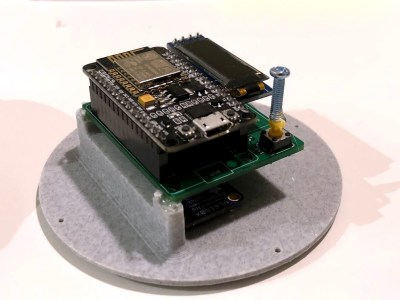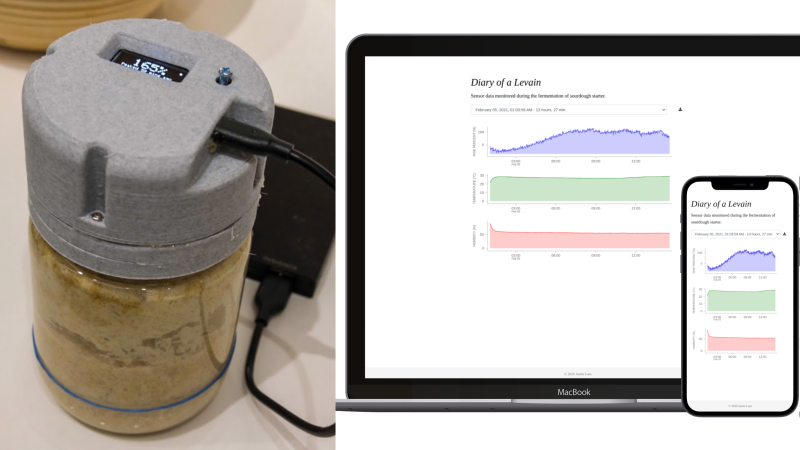[Justin Lam] created a wonderfully-detailed writeup of his Smart Sourdough Lid project, which was created out of a desire to get better data on the progress and health of his sourdough starters, and to do so more efficiently. The result is a tidy, one-piece lid that constantly measures temperature, humidity, and height of the starter in the jar. Data is sent wirelessly for analysis, but there is also a handy OLED display on the top of the lid that shows immediately useful data like how much the starter has peaked, and how much time has passed since it did so.

We really like how focused the design is, and the level of detail [Justin] goes into to explain his design decisions and describe how well they worked out. This isn’t [Justin]’s first kick at the can when it comes to getting data on his sourdough, after all. We remember his earlier work using computer vision to analyze sourdough starters, and he used what he learned to inform this new design; the smart lid is easier to use and handles data much more efficiently.
The project’s GitHub repository has all the information needed to build your own. The lid is ESP8266-based and integrates a VL6180X time-of-flight (ToF) distance sensor, DHT22 to sense temperature and humidity, and a small SSD1306 OLED display for data. A small custom PCB keeps the modules tidy, and a 3D-printed custom enclosure makes it one tidy package.
[Justin] also analyzes the results he obtained and talks about what they mean in the last part of his writeup, so if you’re into baking and interested in his findings, be sure to give that a look.

















Definitely adding this to my to do list!
Leaven can also be used as an approximate timer for a circuit since it’s a fairly predictable process. TV has taught me it can be used as a trigger for a time bomb. Thanks TV.
If you want a longer period timer, get a M8 bolt that holds the spring back, and a 55 gallon barrel of table vinegar, poke the tiniest hole in the bottom of the barrel so it drips onto the bolt about once every 5 seconds…. in about 8 months the bolt will let go.
If you make up a large enough batch it may even become sentient.
What a sweet thing, I love baking, I love sourdough and I love taking data.
Only thing I’d improve is the DHT22 sensor. Those things come in all flavours from everywhere and are all but precise or interchangeable.
I’d go for a well known sensor like a Sensirion SHT series or the SI7021.
Might add co2 sensor as well…
If you can find one that can handle the acidic environment it would give you meaningful data as the CO2 production rate is proportional to the metabolism of the yeast component of the mix, however it will tell you nothing about the lactobacillus activity as you would need to track PH to know what was happening there.
wow, epic idea! i’ve put it on my list
Need an acidity sensor, too. Them lactobaccillus get aggressive and ruin a good batch
… And degrade many plastics they touch. This (supposedly) PLA lid won´t resist these
Nah, baking with sourdough for 10+ years. It’s really easy to adjust all the important parameters if you did it a few times. That’s why I abandoned all my sciency stuff while baking. Timer, thermometer and a warm place is all you need. Everything else is just for the kicks…
But then, you’ll have to come up with a different HaD Loggin’ Contest entry!
B^)
The lactobacillus is what gives the sourdough its sour flavor. The yeast gives the gas filled bubbles. Both are/can be controlled by temperature during fermentation time.
If there was a Kickstarter for this, I would definitely support it.
You just have to take a bit of your last Kickstarter and feed it. You could try making your own Kickstarter, or find a friend that has one and is willing to share with you.
Nearly spit my coffee out! Thanks for the laugh!!